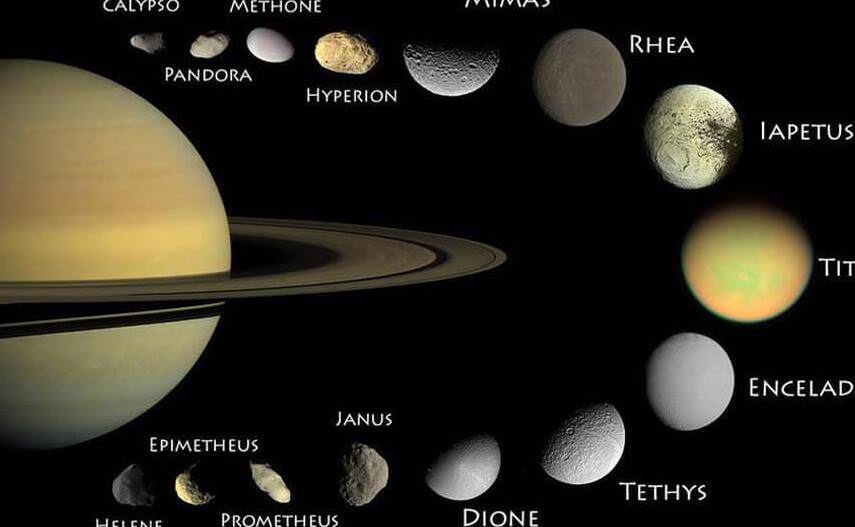Saturn, the sixth planet from the Sun in our solar system, is renowned for its magnificent ring system. However, it also boasts an impressive collection of satellites. Not only are there numerous satellites orbiting Saturn, but each one possesses its own unique characteristics. Furthermore, the moons of Saturn have a fascinating connection to its iconic rings.
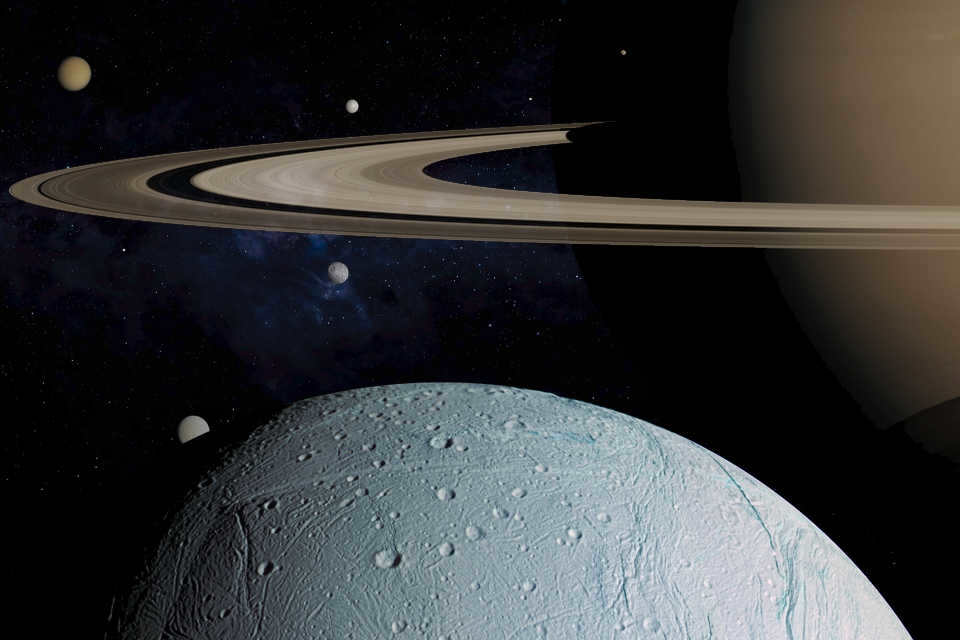

1. How many satellites does Saturn have?
Saturn holds the record for having the most number of satellites among all the planets in our solar system. In May 2023, astronomers made a remarkable discovery by confirming the existence of 62 new bodies orbiting around Saturn, bringing the total count to 146, surpassing even Jupiter. This has occurred multiple times before, such as in 2019, but Jupiter eventually reclaimed the top spot.
The majority of Saturn’s satellites are relatively small in size, measuring only a few kilometers across. The number of these satellites has been rapidly increasing since the latter half of the 20th century and into the 21st century. In 1900, it was believed that Saturn had only 9 moons, which increased to 17 by 1980, and by the turn of the century, it was estimated to have 30 moons.
2. What is the biggest moon of Saturn?
The biggest moon of Saturn is Titan. It has a diameter of 5152 kilometers, making it the second largest moon in the entire solar system, just slightly smaller than Ganymede, which orbits Jupiter.
Titan was the first moon of Saturn to be discovered, with Christian Huygens spotting it in 1655. This moon is particularly fascinating because it is the only moon in the solar system with a substantial atmosphere. It is also notable for being the only known celestial body with a permanent liquid on its surface.
3. What is the most fascinating satellite of Saturn?
When it comes to sheer fascination, it is hard to beat Titan, one of Saturn’s satellites. Its captivating features include a vast expanse of liquid hydrocarbons, creating a sea like no other, surrounded by snowy hills formed from freezing hydrocarbons.
However, Saturn offers other contenders for the title of most fascinating satellite. Take Hyperion, for instance, with its peculiar shape and highly elongated orbit around the planet. The constantly changing length of daylight on Hyperion adds to its allure.
Another noteworthy mention is Iapetus. This satellite stands out due to its stark contrast in albedo between its two hemispheres, with one being significantly darker than the other. Additionally, Iapetus boasts a towering mountain range that spans the entire equator, reaching a staggering height of 13 kilometers.
However, Mimas deserves to be in the spotlight. On the surface of this celestial body, you will find the Herschel crater, which boasts a diameter of 396 km and an impressively elevated outer rim. As a result, this satellite bears a striking resemblance to the Death Star from the Star Wars franchise.
4. Is there any possibility of life on Saturn’s satellites?
There is evidence to suggest that at least one of Saturn’s satellites harbors an ocean of liquid water beneath its icy crust. This certainty arises from the fact that water erupts through fissures in the ice in the form of geysers, propelling it into space. The satellite in question is Enceladus, which measures approximately 500 kilometers in diameter.
In addition, organic molecules were detected in the geysers of Enceladus by the Cassini spacecraft during its flyby in 2018. Furthermore, it was revealed in 2022 that phosphorus is also present in the satellite. While the presence of these compounds does not guarantee the existence of life on Enceladus, the conditions there appear to be more favorable for life than anywhere else outside of Earth. Additionally, there is a possibility of subglacial oceans on Titania and Rhea.
5. What is the relationship between Saturn’s rings and its satellites?
Saturn’s rings consist of numerous tiny particles that vary in size from a few millimeters to kilometers. In a way, they can be seen as a collection of numerous small satellites.
Moreover, some of the larger moons actually orbit within the rings. Moons like Pan, Atlas, and Daphnis create gaps within the rings, while Prometheus and Pandora move in resonance above and below the F ring, earning the nickname “shepherds” of the ring.
Furthermore, it is possible that the ring system itself originated from a large icy satellite. Millions of years ago, this satellite ventured too close to Saturn’s surface and was torn apart by tidal forces.
Stay updated with the most intriguing news and facts by joining our Telegram channel!

As a news editor and article writer, I have spent the past decade dedicated to spreading knowledge and enthusiasm about science in the Ukrainian language. With a background as a Candidate of Technical Sciences and experience teaching civil engineers, I have transitioned to sharing information with the wider public, covering a variety of scientific disciplines. However, my passion for space has remained constant throughout the years. In my writing, I strive to pay tribute to the brilliant scientists behind groundbreaking discoveries and the skilled engineers responsible for constructing advanced space technology.
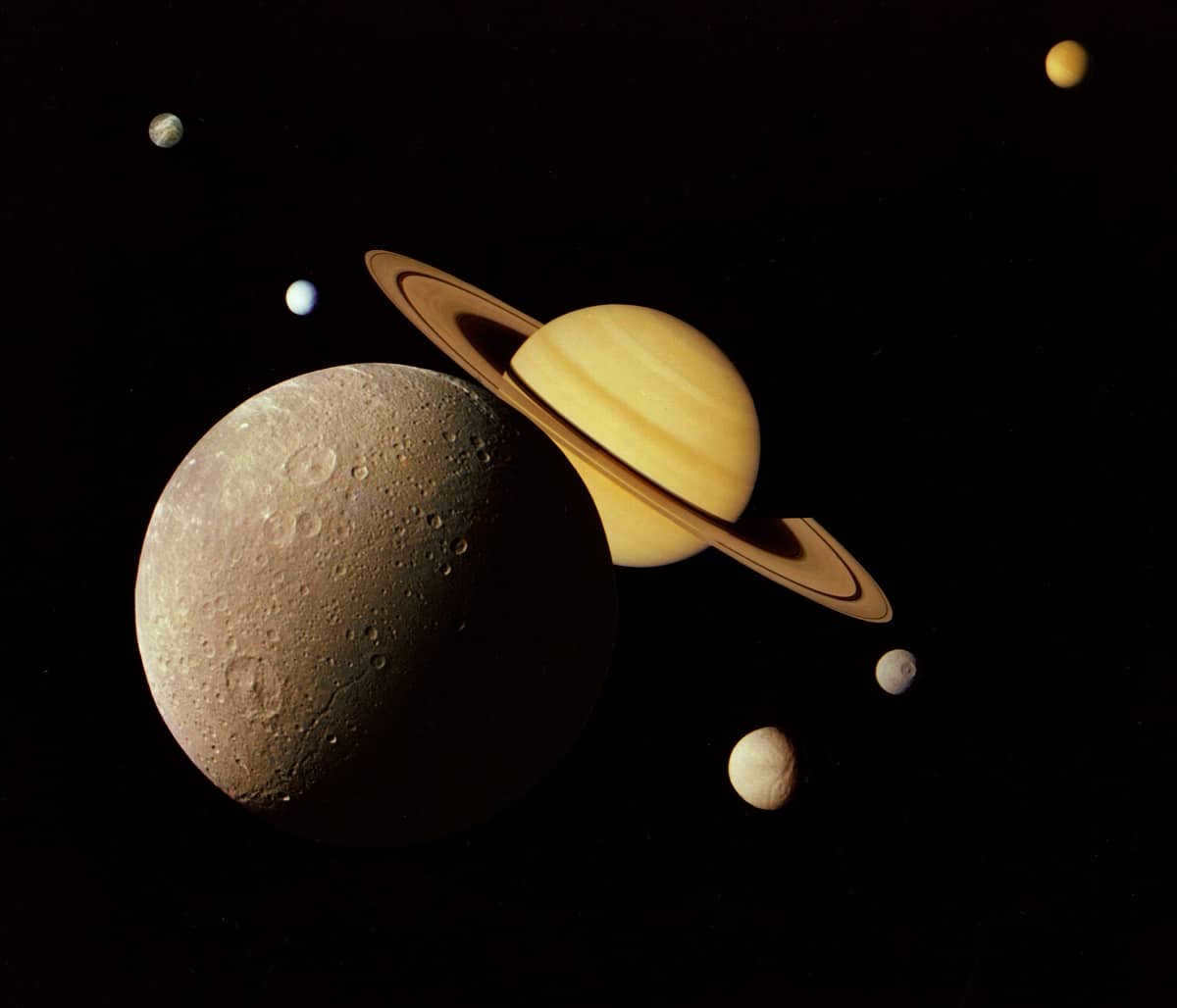
Saturn possesses a multitude of satellites, displaying a diverse assortment. We have satellites varying in magnitude, spanning from mere tens of meters to the colossal Titan, which constitutes a staggering 96% of all celestial matter encircling Earth. Numerous individuals inquire, what is the quantity of satellites that Saturn houses?.
Consequently, we shall dedicate this article to elucidate the presence of Saturn’s satellites, elucidating the distinct characteristics of each and illustrating how they were ascertained through scientific advancements.
Distinctive features of the celestial body
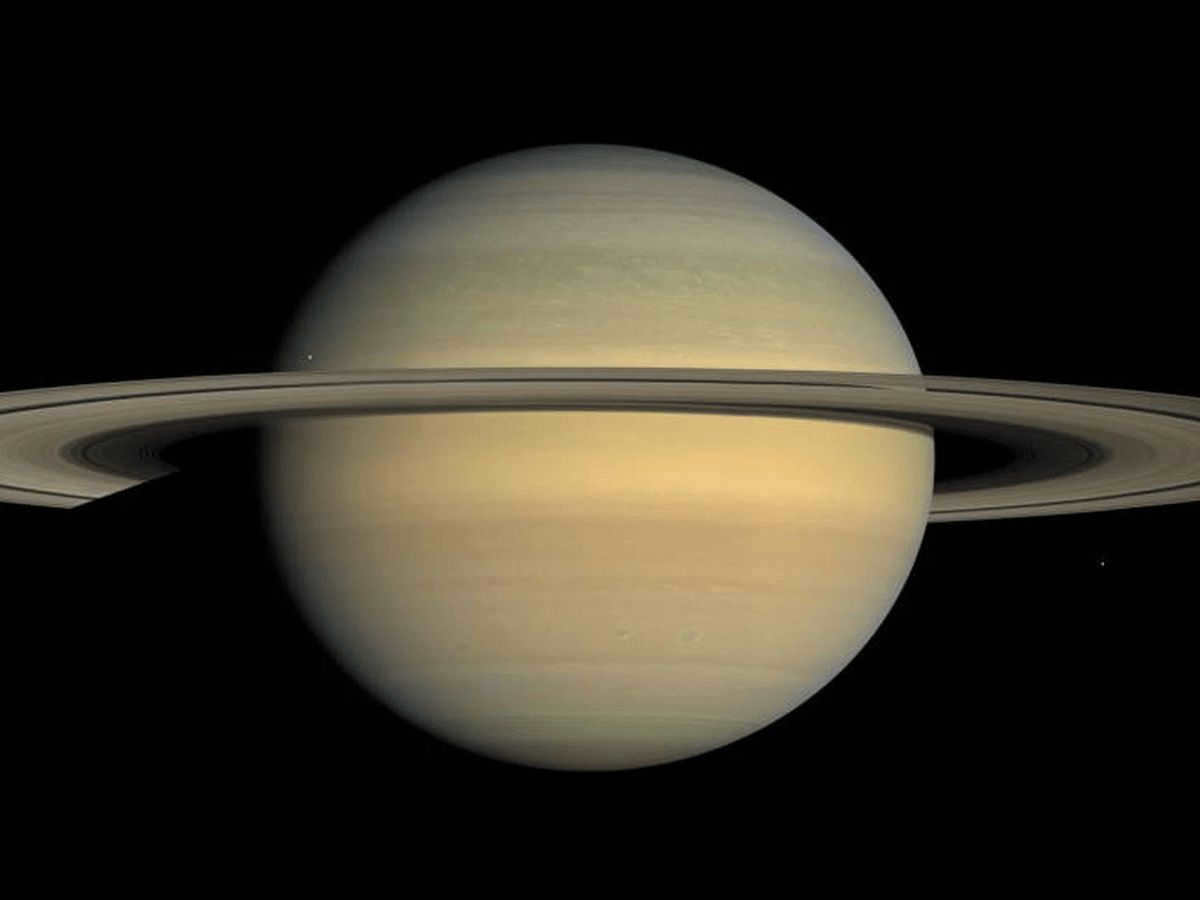
Remember that Saturn is the sixth planet closest to the Sun in our solar system, positioned between Jupiter and Uranus. It holds the distinction of being the second largest planet in our solar system. With a diameter of 120,536 kilometers at its equator.
In terms of its physical shape, Saturn is somewhat flattened at its poles. This flattening is caused by its relatively fast rotation. Its iconic ring system is visible from Earth and it boasts the most extensive collection of asteroids orbiting around it. Due to its composition of primarily helium and hydrogen gases, Saturn is classified as a gas giant. Interestingly, its name is derived from the Roman god Saturnus.
A planet possesses asteroids that revolve around it as a result of the force of gravity. The greater the size of the planet, the more powerful its gravitational force becomes and the greater number of asteroids its orbit can support. Our planet is accompanied by a solitary satellite that revolves around it, but it is also surrounded by numerous rocky fragments that are drawn towards our gravitational field.
What is the number of satellites orbiting around Saturn?
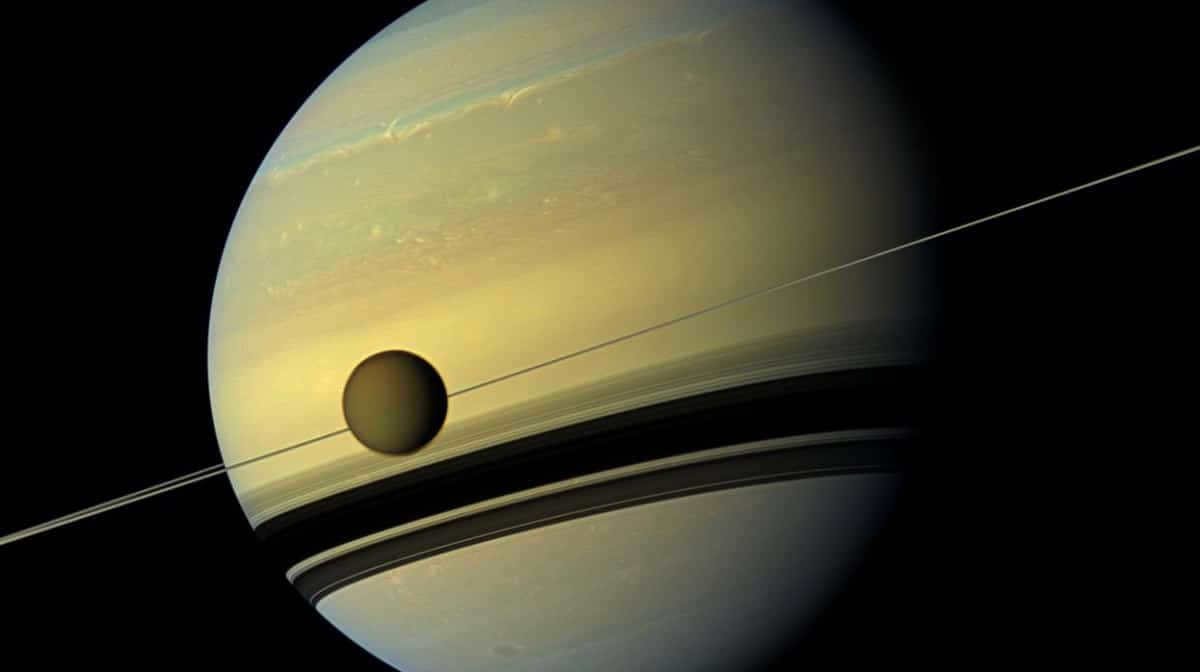
Saturn has various groups of satellites based on their orbit characteristics such as distance, direction, and inclination. Embedded within its rings are more than 150 small moons, also known as circumstellites, along with the rock and dust particles that form them. Other satellites orbit outside the rings at different distances.
The exact number of Saturn’s satellites is difficult to determine. It is estimated to have over 200 satellites, but only 83 of them are considered satellites due to their known orbits and location outside the rings. Out of these 83 satellites, only 13 have a larger diameter (over 50 kilometers).
As time passes, new moons may continue to be found. A recent finding in 2019 includes the identification of at least 20 additional satellites. The terrains of many of Saturn’s moons differ greatly from those found on Earth, although it is possible that some of them could harbor some type of life. Below, we will provide a brief overview of a few of the more notable moons.
Gigantic
Titan is an enormous frigid moon with a thick golden atmosphere that conceals its surface. Compared to the Moon or even Mercury, it is significantly larger. It ranks as the second largest satellite in the entire solar system, surpassed only by one of Jupiter’s satellites known as Ganymede.
Aside from its immense size, Titan is also remarkable for being the sole celestial body (apart from Earth) that possesses a substantial amount of permanent liquid on its surface. Rivers, lakes, oceans, and clouds exist on Titan, where methane and ethane condense and precipitate, forming a cycle akin to Earth’s water cycle.
The vast oceans on Titan may harbor life forms that utilize different chemical elements than what we are accustomed to. Moreover, Beneath Titan’s colossal ice crust, we have discovered a predominantly aqueous ocean that could potentially sustain microscopic organisms akin to those found on Earth.
One of the most notable characteristics of Enceladus is the presence of enormous saltwater columns that emerge from the depths of its subterranean ocean beneath its icy crust through fissures.
These columns create a trail of frozen particles that manage to enter into orbit, forming one of Saturn’s rings. The remaining particles descend back to the surface as snow. This unique phenomenon contributes to Enceladus having the most brilliant and reflective surface (albedo) in the entire solar system.
By studying the patterns of these columns, scientists infer that, in addition to containing the necessary chemical elements for life, there may also be hydrothermal vents similar to those found at the bottom of Earth’s oceans that release hot water. Therefore, Enceladus is likely capable of supporting life.
Rhea, Dione, and Thetis
Rhea, Dione, and Thetis are the names of three mythical goddesses. Rhea is known as the mother of Zeus, while Dione is associated with love and beauty. Thetis, on the other hand, is a sea nymph who is said to have been the mother of Achilles. These three goddesses are often depicted in different forms of art and literature, and their stories have been passed down through generations.
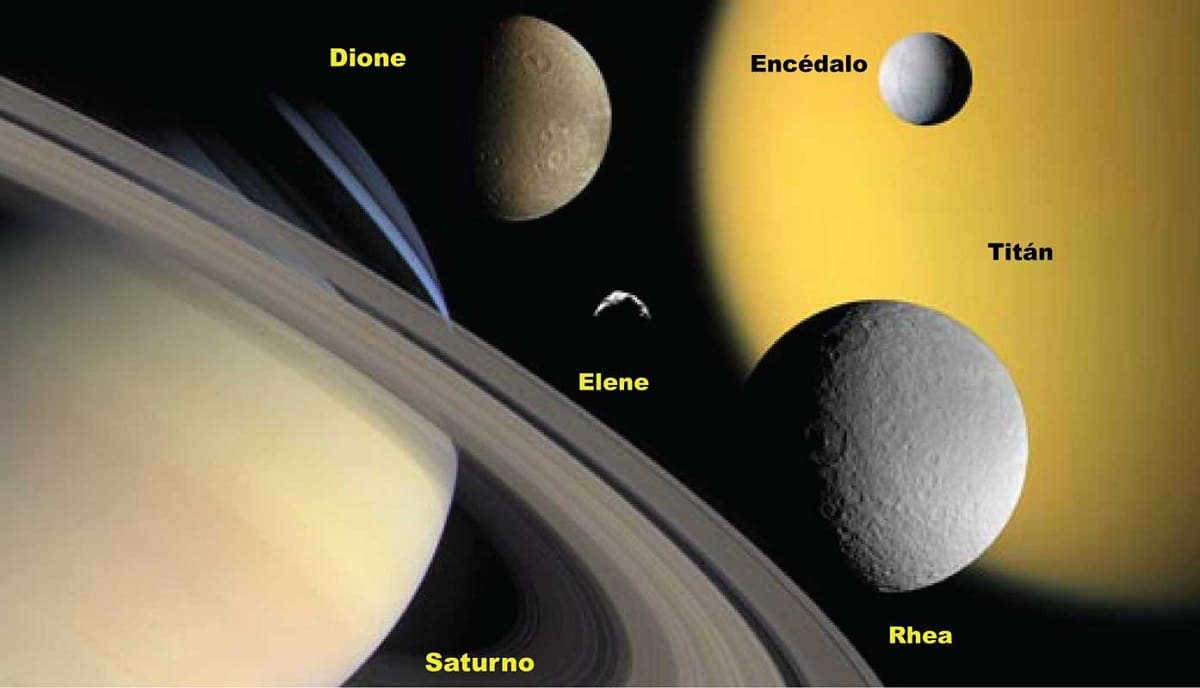
Rhea, Dione, and Thetis have a lot in common in terms of composition and appearance: they are small, frigid (reaching temperatures as low as -220ºC in shaded areas), and devoid of air (except for Rhea), with bodies that resemble dirty snowballs.
These three sibling moons rotate at the same rate as Saturn and always present the same side to Saturn. They are also quite reflective, though not as much as Enceladus. They are believed to be primarily composed of water ice.
As mentioned before, Rhea is not completely airless: it possesses a delicate atmosphere consisting of oxygen and carbon dioxide (CO2) molecules surrounding it. Rhea is also Saturn’s second largest satellite.
Japet
Japet is the third largest moon orbiting Saturn. It is characterized by having two clearly defined halves: one hemisphere is bright, while the other is dark, which remains as one of the most intriguing enigmas in the entire solar system. Additionally, Japet is renowned for its unique feature known as the “equatorial ridge,” a series of mountains reaching heights of up to 10 kilometers that encircles its equator.
Mimas
The surface of Mimas is characterized by massive impact craters. One such crater, measuring 130 kilometers in diameter, dominates nearly a third of the moon’s surface, lending it a striking resemblance to the iconic Death Star from the Star Wars franchise. Furthermore, Mimas is tidally locked with Saturn, meaning it always presents the same face towards the planet. Additionally, it is relatively small in size, with a diameter of 198 kilometers. Interestingly, Mimas is closer in proximity to Enceladus than it is to Saturn.
Unlike the majority of Saturn’s moons, Phebe is a rather faint satellite that originated during the early stages of the solar system. It is situated at a considerable distance from Saturn, approximately 13 million kilometers away, which is almost four times greater than the proximity of its closest neighbor, Japetus.
Phebe’s orbit around Saturn is unique in that it goes in the opposite direction compared to most other moons and celestial bodies in the solar system. This distinctive orbit is referred to as a retrograde orbit.
By having this knowledge, you can delve deeper into the number of satellites that Saturn possesses and the specific characteristics associated with each one.
The content of this article aligns with our editorial ethics guidelines. To report any inaccuracies, please click here.
Full Article Summary: Network Meteorology ” astronomy ” What is the count of Saturn’s satellites?
Saturn is known as the sixth planet from the Sun and is not as famous as some of its counterparts. However, it is the second largest planet in our solar system and is often regarded as one of the most visually stunning due to its mesmerizing rings.
This gas giant has intrigued both scientists and the general public for many years. It is surrounded by icy rocks of various sizes, ranging from tiny millimeter-sized particles to larger ones measuring several meters. The exploration of Saturn began over four centuries ago and continues to this day, constantly revealing new and fascinating information about this celestial body.
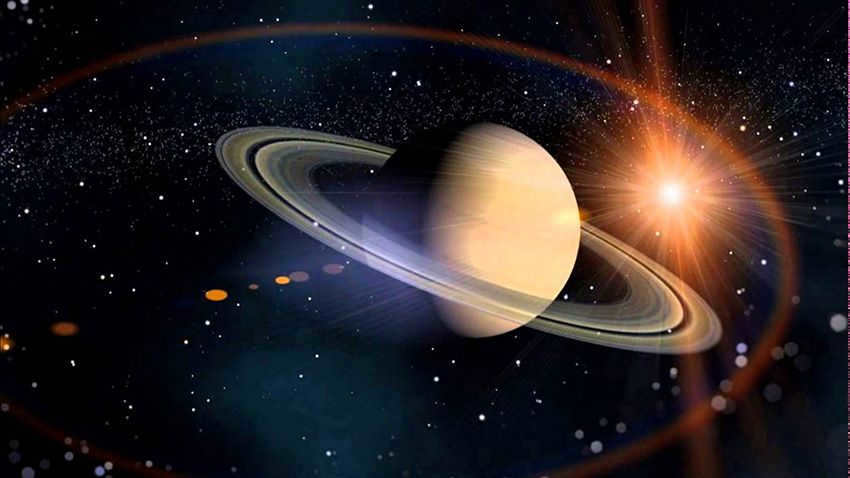
Who was the first to find Saturn and when
The individual who initially discovered Saturn, and had the good fortune to observe it through a telescope, was Galileo Galilei.
The account of the discovery of Saturn goes as follows: during the early 17th century, while observing the planet through a telescope, Galileo Galilei noticed that the celestial body wasn’t singular, but rather appeared to be three bodies that were somehow connected. When he repeated this observation a few years later, he no longer observed two bodies.
In 1659, Christian Huygens, a Dutch explorer, used a more precise telescope to confirm that the objects observed by Galileo were actually a ring around Saturn. Huygens also made another groundbreaking discovery during his exploration – he found Titan, which is the largest moon of Saturn. Another Italian scientist, Giovanni Cassini, further studied Saturn and made significant contributions to our understanding of the planet. In 1675, Cassini observed that Saturn is surrounded by multiple rings, which are separated by a gap now known as the “Cassini gap”. Additionally, Cassini also identified several of Saturn’s moons, including Dione, Japetus, Rhea, and Tephia.
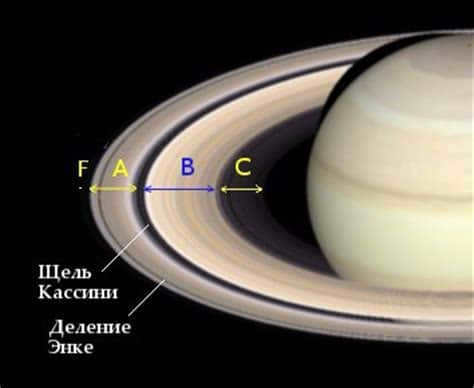
After Cassini’s investigations, it took nearly one hundred and fifty years to gather any substantial information about Saturn.
Nevertheless, in the late 18th century, an Englishman named William Herschel identified two additional significant moons, namely Enceladus and Mimas. Furthermore, the discovery of Hyperion and Phebe, the sole irregular satellite with a retrograde orbit, followed.
Origin of the planet’s name
The planet got its name from the ancient Romans. During that time, all planets were named after gods, and Saturn was no exception.
Who was the planet Saturn named after?
The ancient Romans, while observing the sky, noticed stars that changed their position in the sky. These celestial bodies were called asters or wandering stars. Since the technology of that time did not allow them to identify the rings around the planet, Saturn was perceived as a large celestial body with two “balls” – and, according to mythology, the god Cronus held a sickle in one hand and ears of wheat in the other.
Saturn is a modified version of the name Cronus, the lord of the Titans. Interestingly, Cronus’ wife was Rhea, and his children were Jupiter, Ceres, and Veritas.
What is the position of Saturn in our solar system?
The estimated distance between Saturn and the Sun is around 1,430 million kilometers, and it takes approximately 29.5 Earth years for this giant planet to complete one revolution around the Sun. Interestingly, Saturn completes a rotation around its axis faster than it orbits the Sun.
Saturn is situated as the sixth planet from the Sun, with its neighboring planets being Jupiter (the fifth planet from the Sun) and Uranus (the seventh planet from the Sun).
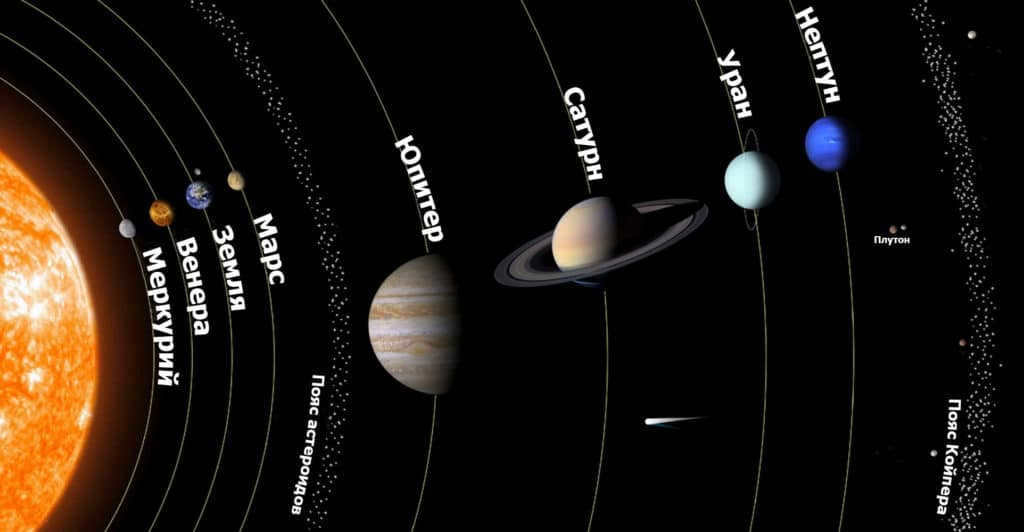
How to Observe the Planet Through a Telescope
By using binoculars, you can observe Saturn’s rings, which appear as small protrusions. With a 60-70 mm telescope, you can clearly see the rings surrounding the planet’s disk. During times when the rings are moderately or fully open, you may even be able to see the Cassini division.
To observe the giant’s cloud belts, you will need a telescope with a diameter of at least 100-125 mm. However, for more in-depth studies, a 200-mm telescope is recommended.
Nowadays, amateur astronomers can find telescopes with these specifications, which allow for the observation of all the planet’s belts, zones, spots, and even the smallest details of the rings. If possible, it is recommended to choose apochromatic refractors, as they provide high contrast and stunning image quality.
Telescopes that have central shielding are not ideal since they disrupt the contrast of colors, despite having a large lens diameter.
When it comes to studying Saturn in detail, manually operating the telescope is not helpful due to the numerous details in the system. It is advisable to have a mount with a Go-To system or a clockwork mechanism for a more effective study.

In order to make the planet body stand out from the background and create a stronger contrast, it is recommended to utilize the following filters:
- Dark yellow (15) and orange (21) filters are suitable for enhancing the visibility of belts, zones, and their intricate details. For telescopes with a diameter of 200mm, dark red (25) can be used as an alternative.
- Yellow (11) filter is helpful in highlighting green and reddish elements.
- Green (58) filter can be used to improve the visibility of spots and polar regions.
- Blue (80A) filter provides more detail of the rings. For larger lenses, it is recommended to use blue (38A) or violet-blue (47) filters.
How to locate a planet in the night sky
In order to locate Saturn in the night sky, it is necessary to carefully examine the star chart: due to its continuous movement, it may not always be visible. Additionally, finding a location away from city lights is crucial to avoid interference.
Using the star chart, you must identify the position of the ecliptic – an imaginary line that passes through the zodiac constellations and aids in determining the planet’s location. In the designated area of the sky where Saturn is expected to be, one should search for a bright, steady shining star (as planets appear as stars to the naked eye) – this will lead you to the desired planet.
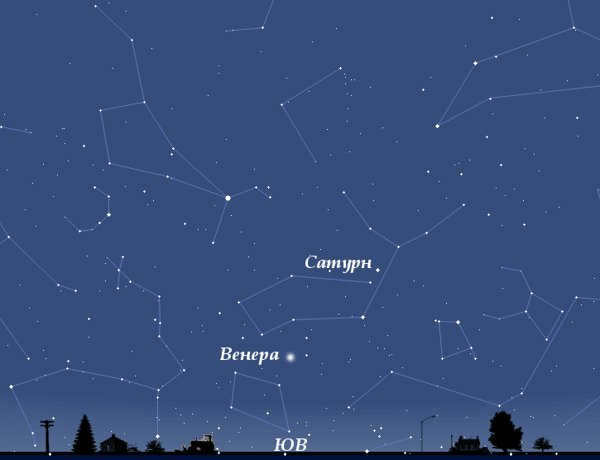
In 2019, the closest approach between Earth and Saturn will occur on July 9th, which is known as the opposition phase. This is the best time to observe the planet as it appears most clearly. Saturn is known for its highly reflective rings and its constant motion, which causes its brightness to vary throughout the year.
Distance between Earth and Saturn
The distance between Earth and Saturn is never constant because the planets in our solar system follow elliptical orbits, which means their distance from each other varies. Scientists have recorded the smallest distance between Earth and Saturn as 1,195,000,000 km, while the largest recorded distance is 1,600,000,000 km. On average, the distance between Earth and Saturn is usually estimated to be around 1,280,000,000 km.
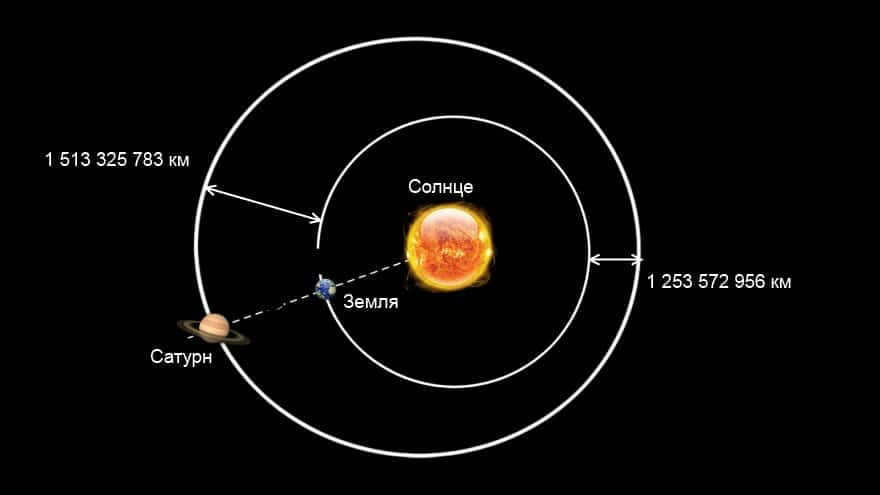
Distance from the Sun
The average distance from the Sun to Saturn is 1.4 billion kilometers. Similar to Earth, these measurements vary throughout the year.
Because dealing with such large numbers can be cumbersome, scientists utilize a unit known as an astronomical unit. One astronomical unit equals 149,600,000 km, thus the average distance from the Sun to Saturn is equivalent to 9 astronomical units.
The Duration of a Journey from Earth to Saturn
The mean distance between Earth and Saturn is 8.5 astronomical units. Assuming a vehicle capable of achieving speeds up to 300,000 kilometers per second, it would theoretically take approximately one hour and thirty minutes to reach Saturn. However, in reality, modern spacecraft require an average of 6-7 years to complete this voyage. Pioneer 11 spent a total of 6.5 years, Voyager 2 took 4 years, Cassini’s journey lasted a lengthy 6 years and 9 months, and New Horizons set a new record with a duration of 2 years and 4 months.
Voyager 1 and Voyager 2 had direct flights to Saturn, while Pioneer 11 and Cassini utilized the gravitational force of other planets to propel themselves closer to the target.
Exploring the Planets
Overview
Saturn, the sixth planet from the Sun, is one of the most prominent and captivating celestial bodies in our solar system.
Known for its stunning beauty and mesmerizing rings, Saturn is classified as a gas giant, along with other majestic planets like Jupiter, Uranus, and Neptune.
Unlike terrestrial planets like Earth, Saturn does not have a solid surface. Instead, its atmosphere is composed primarily of gases.
With a mass that is 95 times greater than Earth’s, Saturn is a colossal planet that continues to intrigue scientists and astronomers alike.
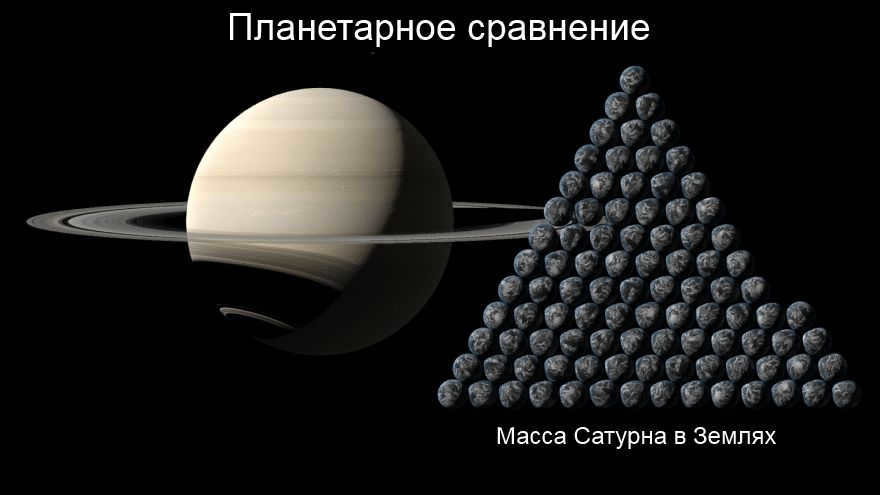
Surprisingly, Saturn has a density of only 0.687 grams per cubic centimeter, which is even lower than the density of water. The composition of Saturn consists of gas layers, with hydrogen turning into a metallic form closer to the center, and a molten substance in the planet’s core. The rings are made up of carbonaceous dust and ice fragments.
Titan, the only moon of Saturn with an atmosphere, is particularly interesting due to its potentially habitable environment. It features methane lakes and frozen nitrogen hills. Out of the 150 satellites, only 53 have been given names, mostly derived from Greek deities.
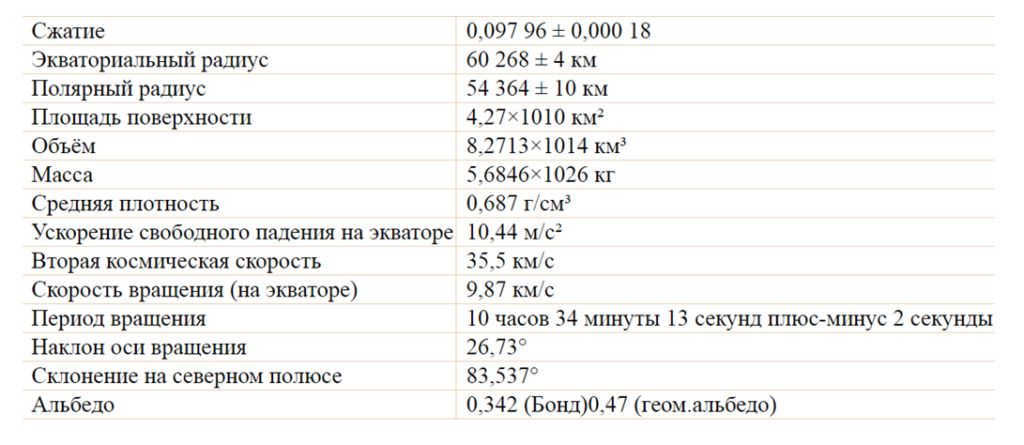
Space Travel to Saturn
Trips to Saturn have been made by spacecraft since the late 20th century. In total, there have been four missions: Pioneer 11, which flew in 1979 and captured the very first images of Saturn and its moons from a distance of 20,000 km. It also measured the temperature of Titan, which was found to be -179 °C.
A year later, Voyager 1 embarked on its journey, followed by Voyager 2 nine months later. Voyager 2 was able to capture high-quality images of Saturn, its rings, and its moons.
These missions led to the discovery of five more moons orbiting the gas giant and confirmed that Saturn has a total of seven rings.
In July 2004, the Cassini-Huygens mission made its approach to Saturn.
The Cassini Mission
The Cassini mission was a collaborative effort between NASA, the European Space Agency (ESA), and the Italian Space Agency.
The objective of the mission was to explore Saturn and its moons. The main component of the mission was the Cassini spacecraft, which was equipped with cameras and satellite dishes specifically designed for research purposes. Attached to the Cassini spacecraft was a probe named “Huygens,” which was intended to land on Saturn’s moon, Titan.
The United States took on the majority of the project’s cost, which amounted to over $2.5 billion. They were also responsible for the development and creation of the Cassini spacecraft. The ESA took charge of the Huygens probe, while the Italians developed the antennas and altimeter. The Huygens probe was named in honor of Christian Huygens, who discovered Titan and the presence of Saturn’s rings. The Cassini spacecraft was named after Giovanni Cassini, who made significant discoveries regarding Saturn’s rings and its four largest moons.
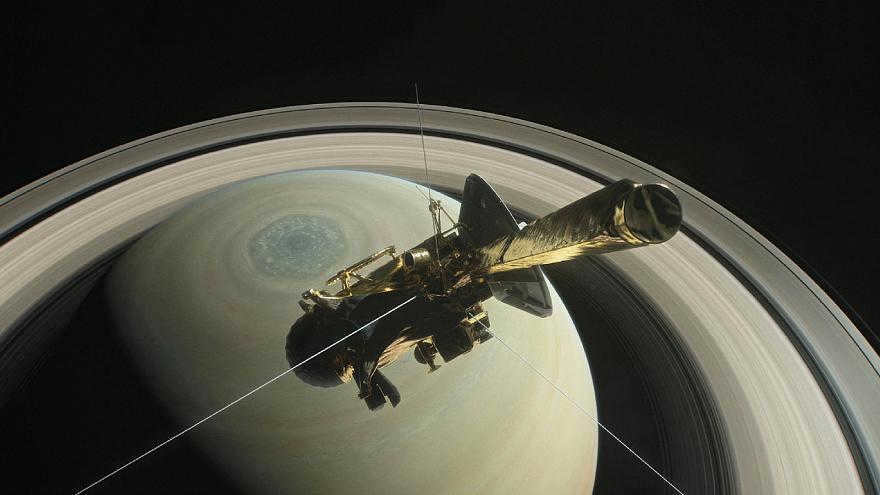
The expedition to Saturn as part of the Cassini-Huygens mission had a price tag of 3 billion dollars, but the data collected during its 20-year operation period definitely justified the cost.
The launch of Cassini and its accompanying probe took place on October 15, 1997, with the initial destination being Venus.
At the time of launch, half of the station’s weight consisted of fuel. “Cassini” took two years to gain speed, utilizing the gravitational pull of the planets it encountered along the way. The station was programmed to operate at only 2% of its maximum power until it reached its final destination.
In the winter of 2000, when Cassini flew by Jupiter, the system became active and captured images that were sent back to Earth. NASA initially thought that the sensors had malfunctioned during the long journey, possibly due to space debris, but the situation quickly improved.
By June 30, 2004, the spacecraft had reached its intended destination and began orbiting the planet, becoming Jupiter’s first man-made satellite. Then, on January 14, 2005, the probe successfully landed on Titan.
Starting from April 26, 2017, Cassini embarked on its most recent mission, conducting over 20 flybys between the inner ring and the planet itself. This allowed for the capture of the first-ever close-range photographs of Jupiter.
On September 15, 2017, Cassini was deliberately burned up in the atmosphere of the gas giant, marking an unforgettable milestone in the history of space exploration.
The station’s unfortunate fate was not a mere coincidence: it was imperative to prevent any contamination of Saturn’s satellites, which, according to research, could potentially be home to extraterrestrial life. The station had been in operation for 20 years, completed numerous orbits around Saturn, and gathered an immense amount of invaluable information about the planet’s system.
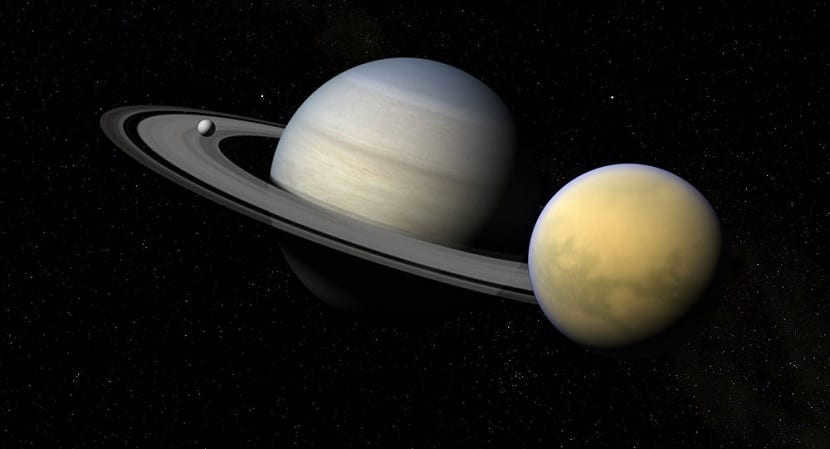
Every planet in the solar system has one or more natural satellites that revolve around it. Satellites possess unique qualities that set them apart from other matter in the universe. In this instance, we will discuss the satellites of Saturn. There are over 50 natural satellites orbiting this planet, but they are categorized into various groups, making it unlikely for anyone to possess comprehensive knowledge about all of Saturn’s satellites.
Which of Saturn’s satellites hold the most significance, and what are their distinguishing attributes? This article will thoroughly examine each of these aspects.
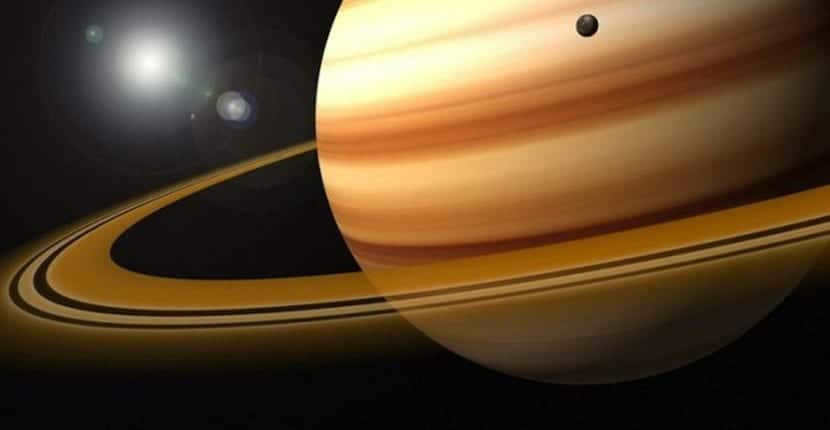
We can recall Saturn as the lowest planet in the solar system when it comes to its proximity to the Sun. It sits between Jupiter and Uranus and holds the title of the second largest planet in the solar system. With an equatorial diameter of 120,536 kilometers, Saturn definitely makes a big impression.
In terms of its shape, Saturn is slightly flattened at the poles. This is a result of its rapid rotation. Its iconic ring system is visible from Earth, making it a fascinating sight to behold. Additionally, Saturn boasts the most number of asteroids orbiting around it compared to any other planet. Thanks to its composition primarily consisting of hydrogen and helium, Saturn is classified as a gas giant. Interestingly, its name is derived from the Roman god Saturn.
The moons of Saturn
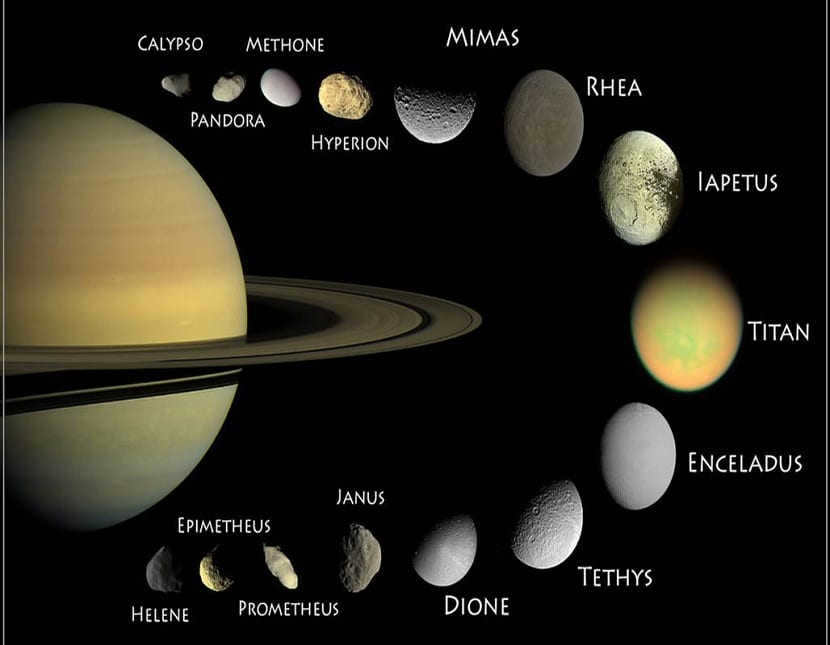
After reviewing some of Saturn’s characteristics, let’s delve into the topic of its satellites. Currently, there are 62 known moons orbiting Saturn. These are the satellites that have been scientifically confirmed thus far. Each of these moons possesses unique shapes, surfaces, and origins. Scientists hypothesize that the majority of Saturn’s satellites were captured by the planet’s gravitational force upon entering its vicinity.
It is the force of gravity that causes asteroids to orbit around planets. The gravitational force is stronger for larger planets, allowing them to attract and hold more asteroids in their orbit. This results in a significant amount of material orbiting these planets. While our planet only has one satellite orbiting around it, it also attracts thousands of rocky fragments due to its gravitational field.
Titan is the most significant moon of Saturn. You may have heard of it before. It is considered the most important because it is the largest moon in the Saturn system and the second largest in the entire solar system, after Ganymede (which belongs to one of Jupiter’s moons). Titan stands out because it is the only celestial body with stable liquid deposits.
Satellite clusters
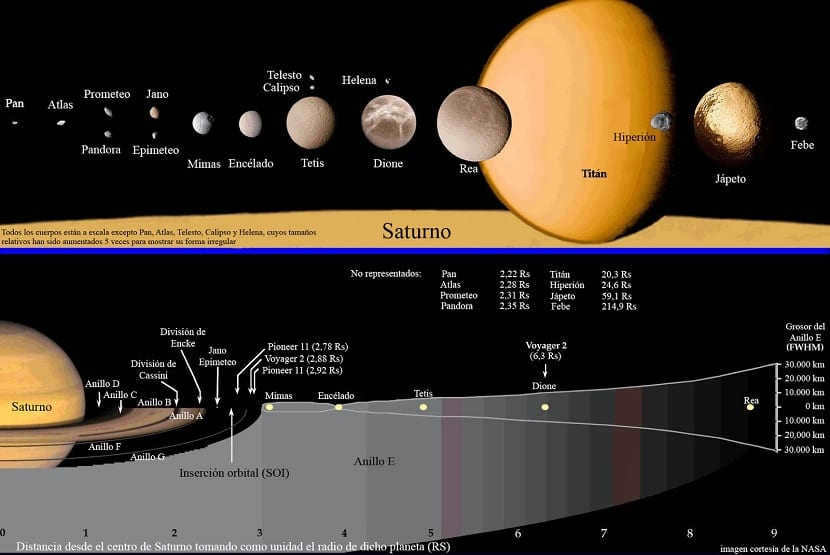
We will categorize the various satellites of the planet Saturn into distinct groups. These satellites form the Saturn system and are classified based on their primary characteristics. Let’s explore these groups:
- Titan. As previously mentioned, Titan is the largest and most significant satellite. Its size is comparable to that of a planet, almost as big as Mercury. With a diameter of 5,150 kilometers, Titan is notable for its dense atmosphere, holding the record as the only moon with such an atmosphere.
- Frigid middle moons. These moons are of typical dimensions. As their name suggests, they are icy and pockmarked with various craters. These moons were discovered prior to certain expeditions using telescopes. Some of the most notable ones include Tethys, Dione, Rhea, Hyperion, and Japetus.
- Encircling moons. Encircling moons are those that orbit within Saturn’s rings.
- Guardian moons. This refers to those outside the ring. Due to their orbit, they can help organize and regulate the rings like guardians. Some of the more renowned ones include the F ring, Pandora, and Prometheus.
- Satellites in Trojan orbits. These satellites circle Saturn at the same distance as the larger satellites. They are typically located approximately 60 degrees ahead or behind the planet. Helena and Pollux are among the most well-known examples.
- Co-orbital satellites. These satellites share the same orbital path, ensuring that they can’t collide with each other.
- Irregular satellites. This is a large group of satellites that are located quite far from Saturn. They are influenced by the planet’s gravitational field.
- Minor inner satellites. These are all the satellites that orbit between Mimas and Enceladus. They occupy the space between the orbits of these two icy satellites.
Let’s examine the most significant moons of Saturn. Titan stands out as the most crucial due to its larger size and abundance of hydrocarbons and hydrogen. These elements give it a distinctive yellowish hue. It orbits Saturn at a distance of approximately 1,222,000 kilometers and completes a revolution around the planet every 16 days.
Now, let’s turn our attention to Rhee. This moon is also highly significant in Saturn’s collection of satellites. It belongs to the middle group of icy moons and has a diameter of 1,530 kilometers. Rhee is positioned closer to Saturn and is believed to have a rocky core with a high water content.
Lastly, we have Enceladus, the sixth largest moon of Saturn. With a diameter of 500 kilometers, Enceladus is part of the cluster of frozen environment moons. Its icy surface gives it a brilliant white appearance as it reflects nearly 100% of the sunlight it receives.
With the information provided, you can gain a deeper understanding of Saturn’s moons and explore the fascinating characteristics of this remarkable planet.
This article adheres to our editorial standards and guidelines. If you notice any inaccuracies, please click here to report them.
Article Summary: Network Meteorology “astronomy” Saturn’s Moons

Saturn is known as the second largest planet in our solar system and is classified as a gas giant. Another popular nickname for Saturn is the “Lord of the Rings” due to the beautiful rings that surround the planet.
The satellites of Saturn form a complex system of natural satellites orbiting the planet. There are a total of 62 objects in this system, with 53 of them having specific names. Each moon is a fascinating world of its own, whether it’s the cloud-covered Titan or the crater-filled Thebes. In this article, we will uncover the mysteries of these unique moons.
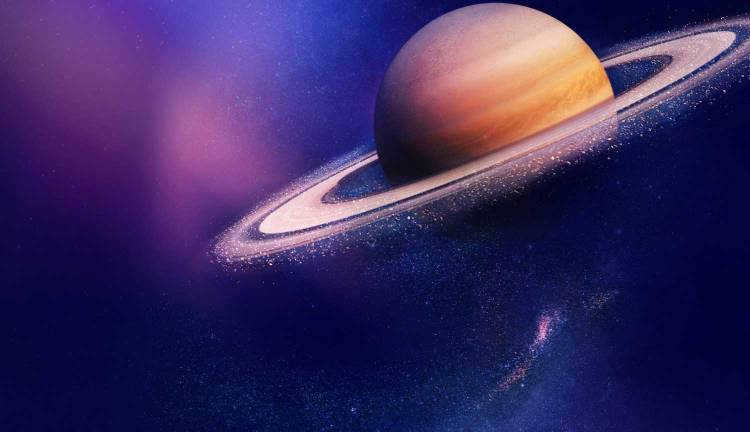
Exploring Saturn’s Satellites
The first satellite of Saturn to be discovered was Titan, back in 1655. It was Christian Huygens who made this groundbreaking discovery.
Over the next few decades, several more satellites were found, including Japetus, Dione, Tefia, and Rhea, between 1671 and 1684. These impressive moons were all discovered by the renowned astronomer Giovanni Domenico Cassini.
Fast forward 105 years later, and two more satellites were added to Saturn’s collection. Mimas and Enceladus were discovered by none other than William Herschel.
The moons that followed the discoveries were Hyperion and Theba (1848 and 1898, respectively). However, research came to a halt as telescopes lacked the resolving power to make observations at the necessary level. The next breakthrough came in 1966 with the discovery of Epimetheus and Janus, thanks to a technical advancement in astronomy.
A significant breakthrough in the study of Saturn occurred in 1997 with the launch of the Cassini spacecraft, resulting in the discovery of all the largest satellites of Saturn in a relatively short period of time.
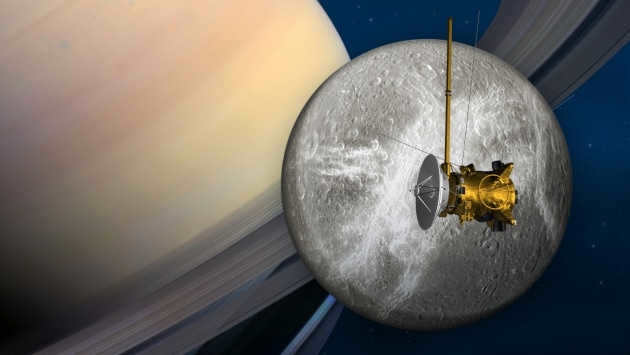
Count and Names of Saturn’s Moons
What is the total number of moons orbiting Saturn? A whopping 62 natural satellites have been identified around this planet. However, as technology advances, new moons are continually being discovered every 5-10 years. With so many moons already known, there are surely many more surprises awaiting us from Saturn.
Among the intriguing moons, two worth mentioning are Pandora and Hyperion. Pandora is believed to be a porous icy celestial body, while Hyperion is an icy moon with internal cavities. The irregular shape of Hyperion is a result of multiple collisions with space debris. Additionally, Hyperion’s orbital path is characterized by chaotic movement.
Theba is unique among Saturn’s moons because it rotates in the opposite direction to the other celestial bodies in Saturn’s orbit. There are several other interesting moons worth mentioning, including Atlanteus, Mimas, and Janus. Below you’ll find more detailed information about them.
Here is a list of Saturn’s satellites:
- Titan;
- Rhea;
- Mimas;
- Tefia;
- Dione;
- Enceladus;
- Japetus;
- Hyperion;
- Janus;
- Theba;
- Epimetheus;
- Helen;
- Calypso;
- Telesto;
- Pandora;
- Pan;
- Ymir;
- Prometheus;
- Idjirak;
- Paliak;
- Atlas;
- Tarvos;
- Mundilfari;
- Suttung;
- Kiwiok;
- Siarnak;
- Scadi;
- Erripo;
- Albiorix;
- Polydevc;
- Aegir;
- Daphnis;
- Mephona;
- Pallena;
- Narvi;
- Bilge;
- Hyrroquin;
- Forniot;
- Hati;
- Farbauti;
- Fenrir;
- Befind;
- Bestla;
- Bergelmir;
- Titus;
- Tarkek;
- Grape;
- Egeon;
- Jarnsaksa;
- Kari;
- Surt;
- Anfa;
- Skoll;
- Loglines;
- 8 unnamed natural satellites;
- minilunars.
The most massive satellites
Saturn’s orbit is abundant in enormous celestial objects. The six most massive moons of Saturn are among the top fifteen largest celestial bodies (excluding planets) in the entire solar system.
All of Saturn’s largest moons share a common origin and structure. What sets them apart is their significant gravitational impact on the planet’s iconic rings. Below, you will find a rundown of the most significant members of Saturn’s orbit, along with some of their notable characteristics.
Titan
Introducing the inventory of the biggest moons – Titan. Titan happens to be the runner-up when it comes to the size of satellites in the Solar System, with Ganymede, Jupiter’s own moon, holding the top spot.
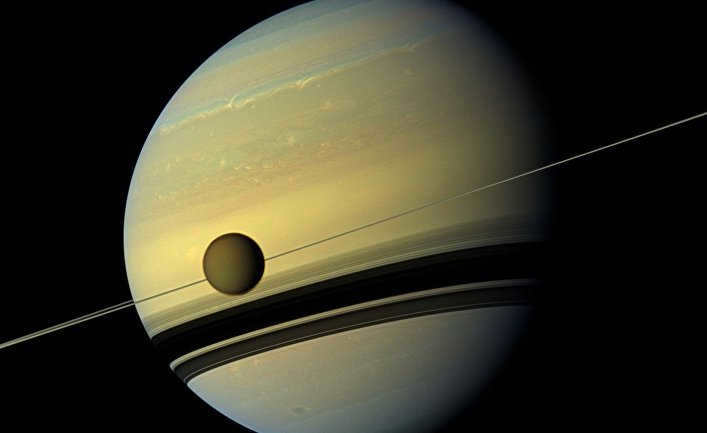
Saturn’s Satellite Rhea
Rhea, the second largest moon of Saturn, is depicted as an outer satellite in the scheme of Saturn’s satellites, positioning it outside the planet’s ring system.
Rhea is primarily composed of ice with small traces of rocks, resulting in a low density of 1.3 kg/cm3. Its atmosphere is mainly composed of oxygen and carbon dioxide. The surface of Rhea is covered in craters, which are distinguished by their size.
There are two categories of craters on Rhea: one with a diameter not exceeding 20 km, and the other ranging from 30 to 40 km, indicating a likely meteoritic origin.
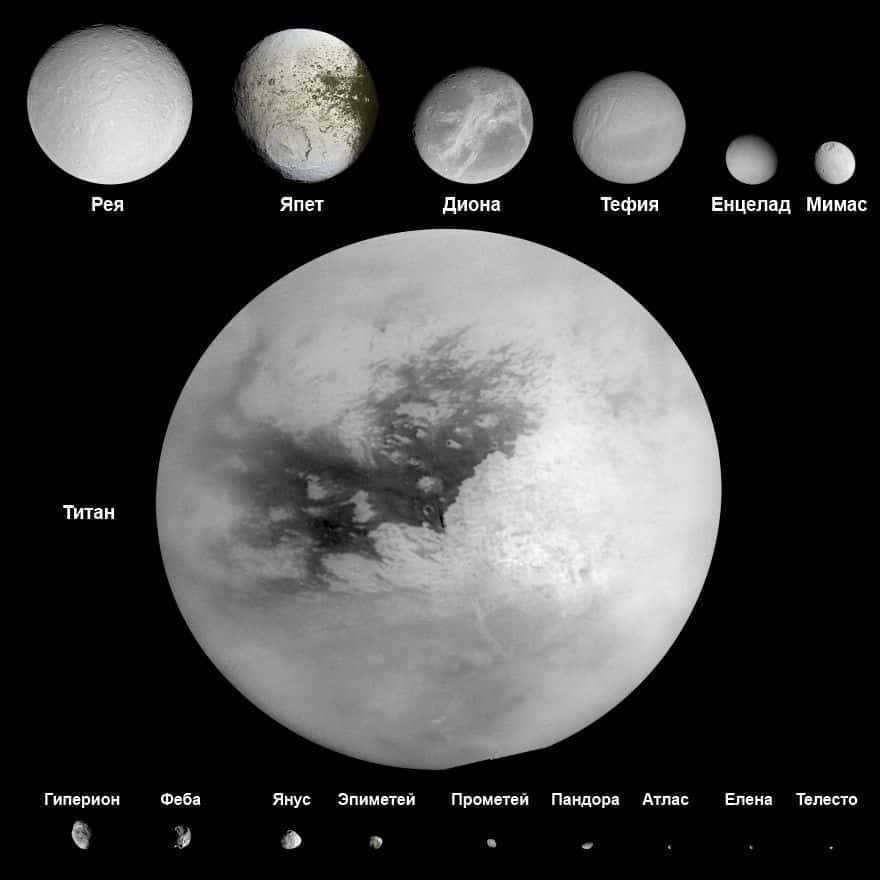
Japet
Japet is the third largest moon of Saturn. Prior to being named Japet, it was designated as Saturn VIII. It possesses several distinctive characteristics:
- The front of Japet is black, while its back is white. Additionally, its rear side is the second brightest in the entire solar system, trailing only Europa, one of Jupiter’s moons.
- Japet has a low density, suggesting that it is composed of ice in a liquid state.
- It is one of Saturn’s two moons that is inclined at an angle to the planet’s equator (15.47 degrees).
- Running across its surface is a mountain range referred to as the “Japet Wall”.
Dione
Dione is yet another one of the massive moons.
The outer layer is composed of ice, and recent data from the “Cassini” spacecraft suggests that there may be an ocean or even individual lakes beneath the surface.

Tefia
Tefia is a moon of Saturn with physical characteristics resembling those of Rhea and Dione. It is believed to have formed from the gas-dust cloud that surrounded the planet during its early stages.
Similar to Rhea and Dione, Tefia’s surface is covered with craters. These craters are localized, suggesting a similar origin.
One prominent feature on Tefia’s surface is a massive fault that stretches for 2000 km in length and 100 km in width.
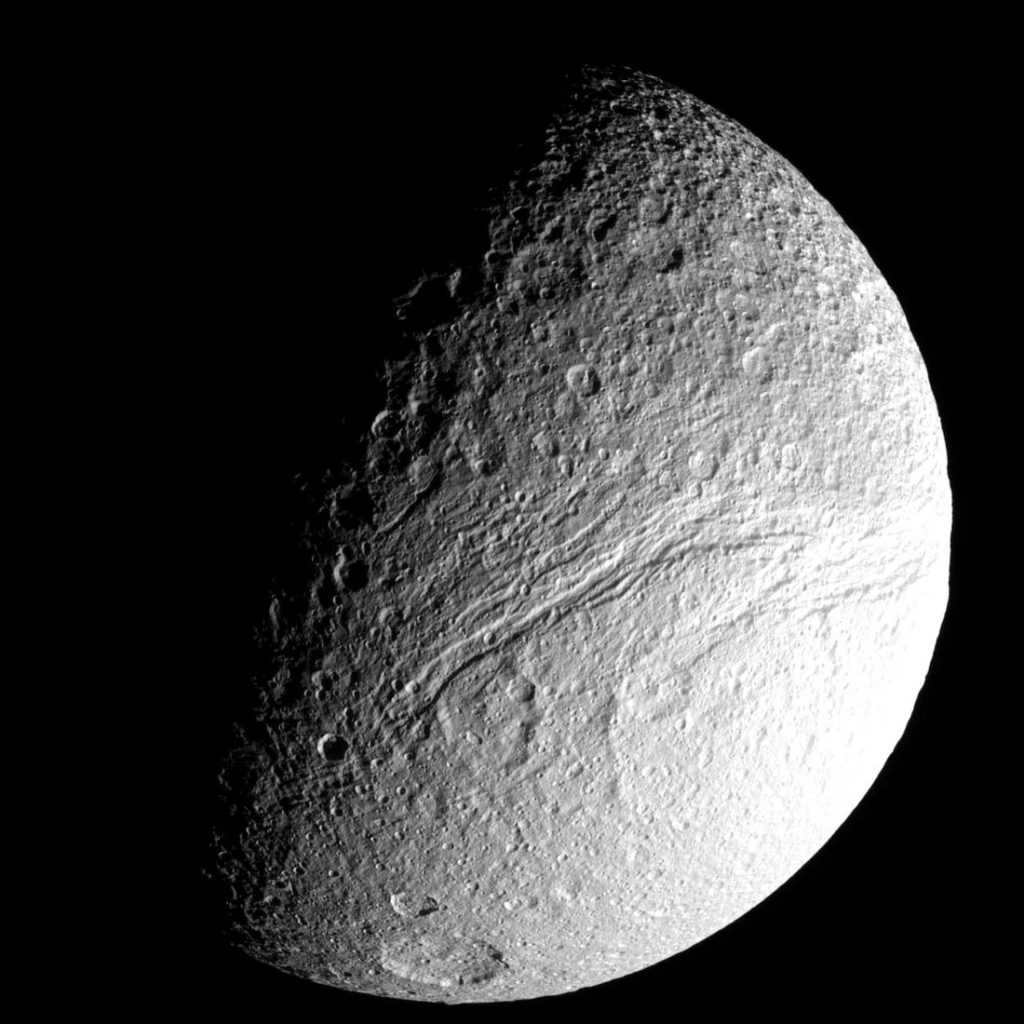
Enceladus
Enceladus is Saturn’s sixth largest moon, with a diameter of approximately 500 kilometers. One notable characteristic of Enceladus is its high ability to reflect sunlight, which provides clues about its composition. The moon’s low density is attributed to its icy composition.
An interesting phenomenon on Enceladus is the presence of ice volcanoes, suggesting the existence of liquid water beneath its surface.
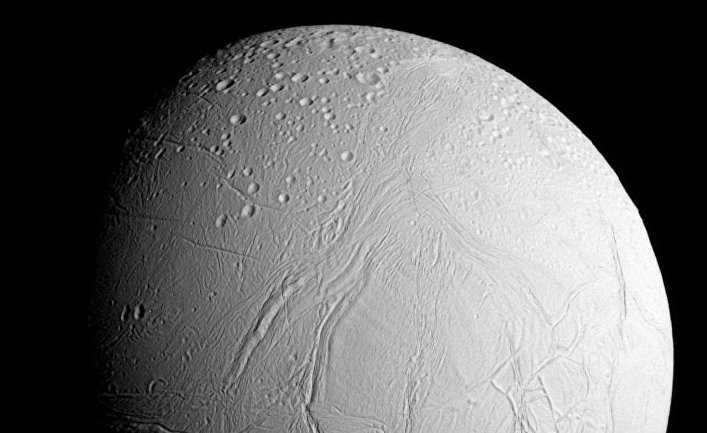
Mimas
Mimas is one of the larger moons of Saturn and was given its name after a titan from Greek mythology. With a diameter of approximately 400 kilometers, it holds the distinction of being the smallest celestial body in the entire solar system. Its rounded shape is a result of its own gravity.
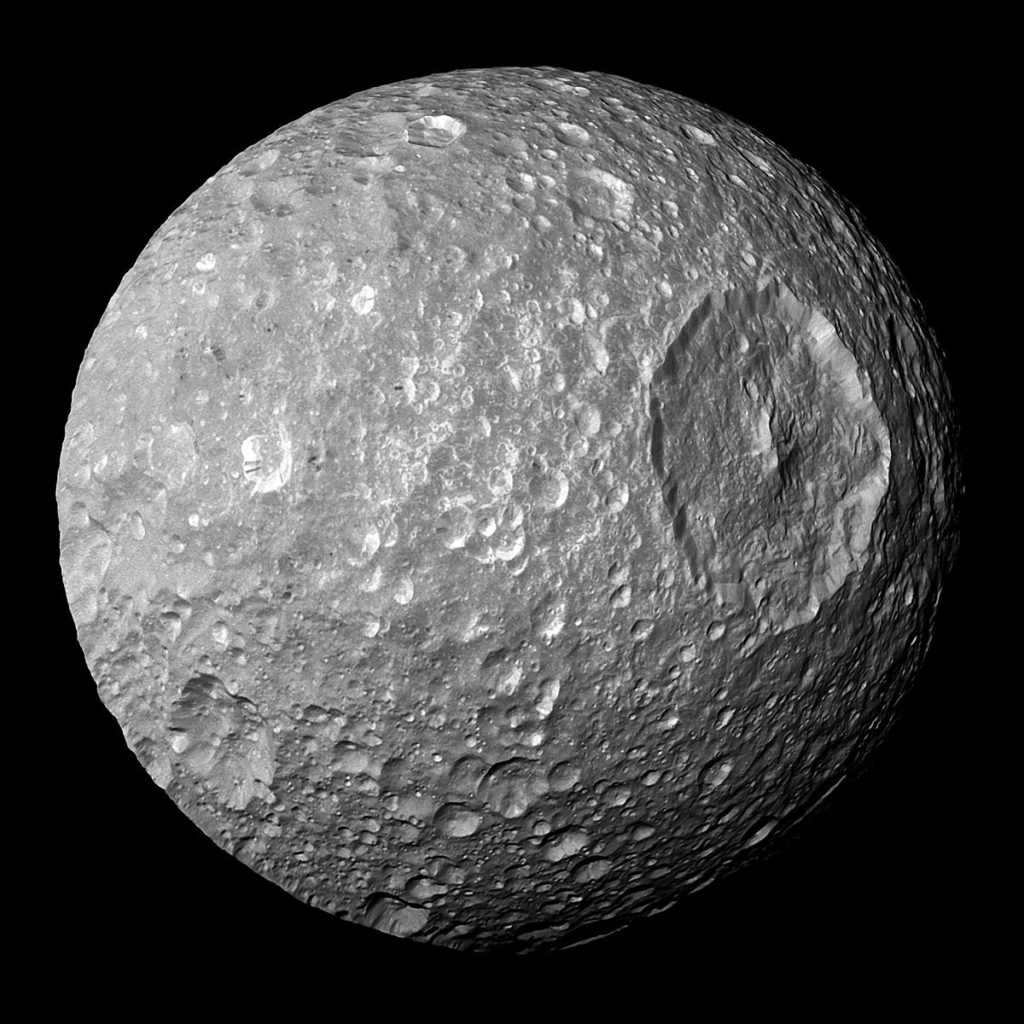
Formation and Composition of Saturn’s Satellites
Before delving into this subject, it is worth noting that there are two types of Saturn’s satellites: regular (also known as moons) and irregular. The key distinction between them is that the regular satellites orbit the planet in a predictable manner, whereas the irregular satellites have the ability to alter their trajectory or even temporarily disappear before reappearing.
According to a prevailing theory, the regular satellites formed from protoplanetary disks in close proximity to Saturn, while the irregular satellites originated from the powerful gravitational pull of the planet.
Furthermore, there exist several other alternative hypotheses. One of these suggests that Titan, the largest moon, came into existence due to the impact of two immense asteroids, leading to the formation of Titan as well as numerous smaller moons. This particular theory is also valid, considering the fact that multiple moons of the said planet have overlapping orbits.
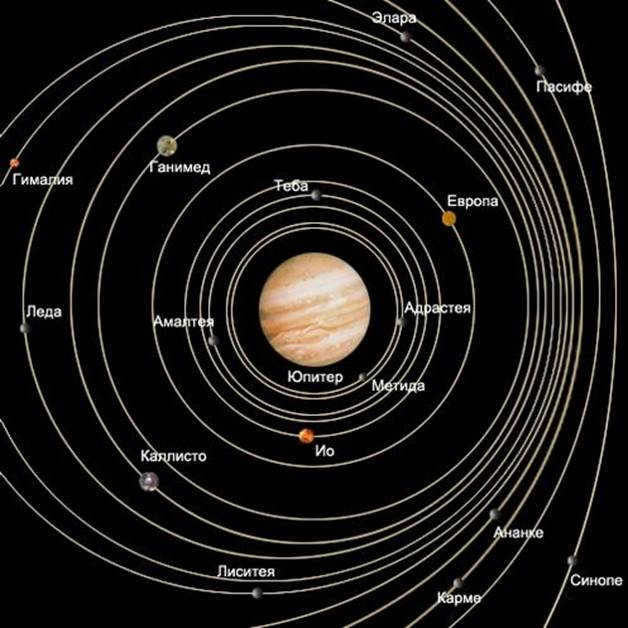
The velocity of the satellites
The velocity of the moons of Saturn varies significantly based on their regularity. Consequently, the irregular moons of Saturn, which are in retrograde orbits, require 800 to 1,400 days to complete one orbit around the planet.
Saturn’s inner (regular) satellites have orbital periods that span from a few hours to 300 days, contingent upon the planet’s mass and distance.

